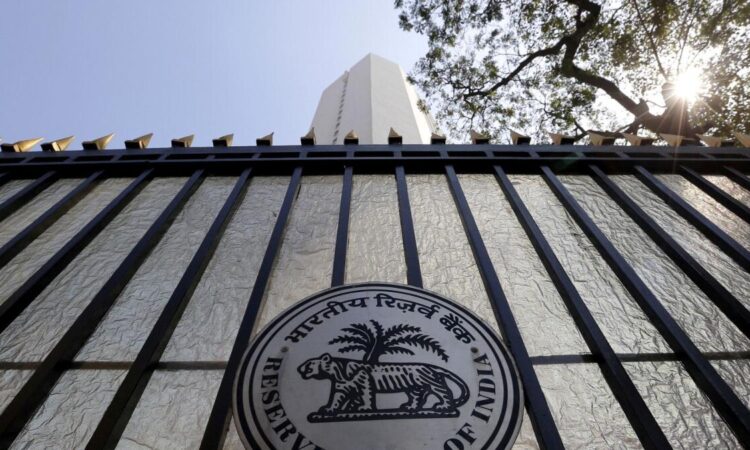

The Reserve Bank of India (RBI) seal is pictured on a gate outside the RBI headquarters in Mumbai. — Reuters file
The Reserve Bank of India (RBI) is actively encouraging local banks to facilitate trade settlements between the UAE and India using either the dirham or the Indian rupee as part of a broader strategy aimed at reducing dependence on the greenback in international trade.
For the two economic partners, who are members of the Brics, the move to switch to direct trade in local currencies initiated in January 2024 is strategic as the two sides plan to expand bilateral trade to $100 billion under their free trade pact while aligning with the multilateral alliance’s de-dollarisation drive.
RBI’s push for dirham-rupee trade also falls in line with the apex bank’s broader goal of promoting trade settlement in local currencies with nations where India has a trade deficit. By doing so, the RBI aims to enhance the global reach of the Indian rupee, added the report.
India’s trade deficit with the UAE for the fiscal year 2022-23 amounted to $21.62 billion, constituting 8.2 per cent of its total trade deficit.
Analysts observed that by promoting direct rupee-dirham settlements, the RBI aims to make transactions more efficient and cost-effective for businesses, reducing currency exchange risks and transaction costs. India is the UAE’s second-largest and the UAE is India’s third-largest trading partner. Bilateral trade between the two countries increased by 16 per cent to $84.5 billion between April 2022 and March 2023 from $72.9 billion in the previous financial year in the wake of the landmark Comprehensive Economic Partnership Agreement both nations signed.
Sajith Kumar P.K. CEO and managing director at IBMC Financial Professionals Group, said the RBI push is significant as India seeks to accelerate the internationalization of its currency and promote its use in global trade. “Trading in local currencies will help enhance liquidity in the rupee-dirham market and support the growth of trade between the two nations. While the concept of direct currency settlements is not new, the RBI’s renewed focus on this mechanism indicates a strategic shift towards diversifying currency usage in international trade, particularly in the face of global economic uncertainties.”
Currency experts said banks in both countries are expected to play a crucial role in this transition by developing the necessary infrastructure and systems to support direct rupee-dirham trade. The RBI’s initiative is likely to encourage more businesses to adopt this settlement mechanism, potentially increasing the volume of trade conducted in local currencies.
They said as India seeks to reinforce its position as a global trading nation while aiming to emerge as the third largest-economy by 2027, the success of the rupee-dirham settlement mechanism could pave the way for similar arrangements with other key trading partners. The move comes amid a broader trend of countries exploring alternatives to dollar-dominated trade, particularly in the context of geopolitical shifts and the desire to reduce exposure to exchange rate fluctuations, they said.
Kumar said direct local currency transaction protects the bilateral trade from geopolitical risks and currency fluctuations while helping both countries to de-risk their dependence and exposure to the reserve currencies in use today. It will have a significant impact as the removal of hedging costs should make India’s export pricing more competitive, he said


